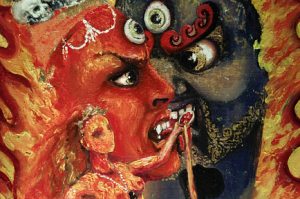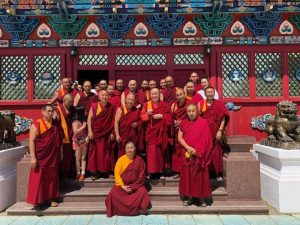Photos by Jonathan Greet. Additional text by Dr. Thinles Dorje
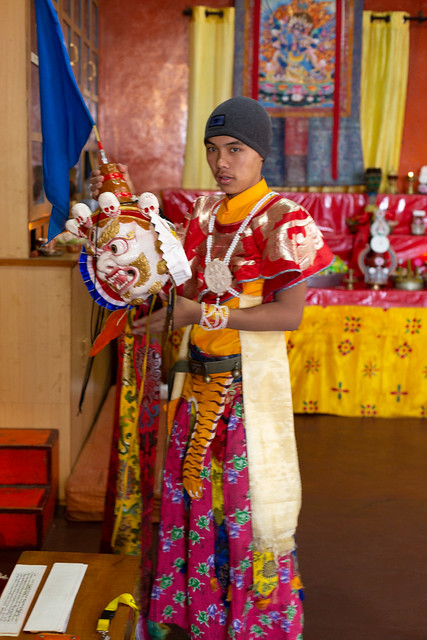
Our organization, Core of Culture, works to safeguard the continuity of ancient movement practices and other intangible cultural heritage. In May 2019, our team, made up of British director of photography Jonathan Greet, Ladakhi scholar of Buddhist ritual Dr. Thinles Dorje, remote guide Dechen Lundup, and myself, was invited by Shedup Jigmed Sangpo, the dorje lopon of Dorje Drak Monastery in Shimla, India, to observe and document certain of their Nyinmga rituals. The Nyingma school is oldest of the four main traditions of Vajrayana Buddhism.
The Accomplishment of Mani ritual is a recitation of the mantra of Avalokiteshvara, “Om Mani Padme Hum,” generated over the course of a week within a context of daily Vajrayana rituals. Om Mani Padme Hum is perhaps the most well known mantra in all of Buddhism. The pervasiveness and fundamentality of Om Mani Padme Hum, coupled into the living Nyingma transmission of ritual practices, remains ongoing from generation to generation. Privileged access to rituals, information, and documents was provided to Core of Culture by the dorje lopon of Dorje Drak Monastery.
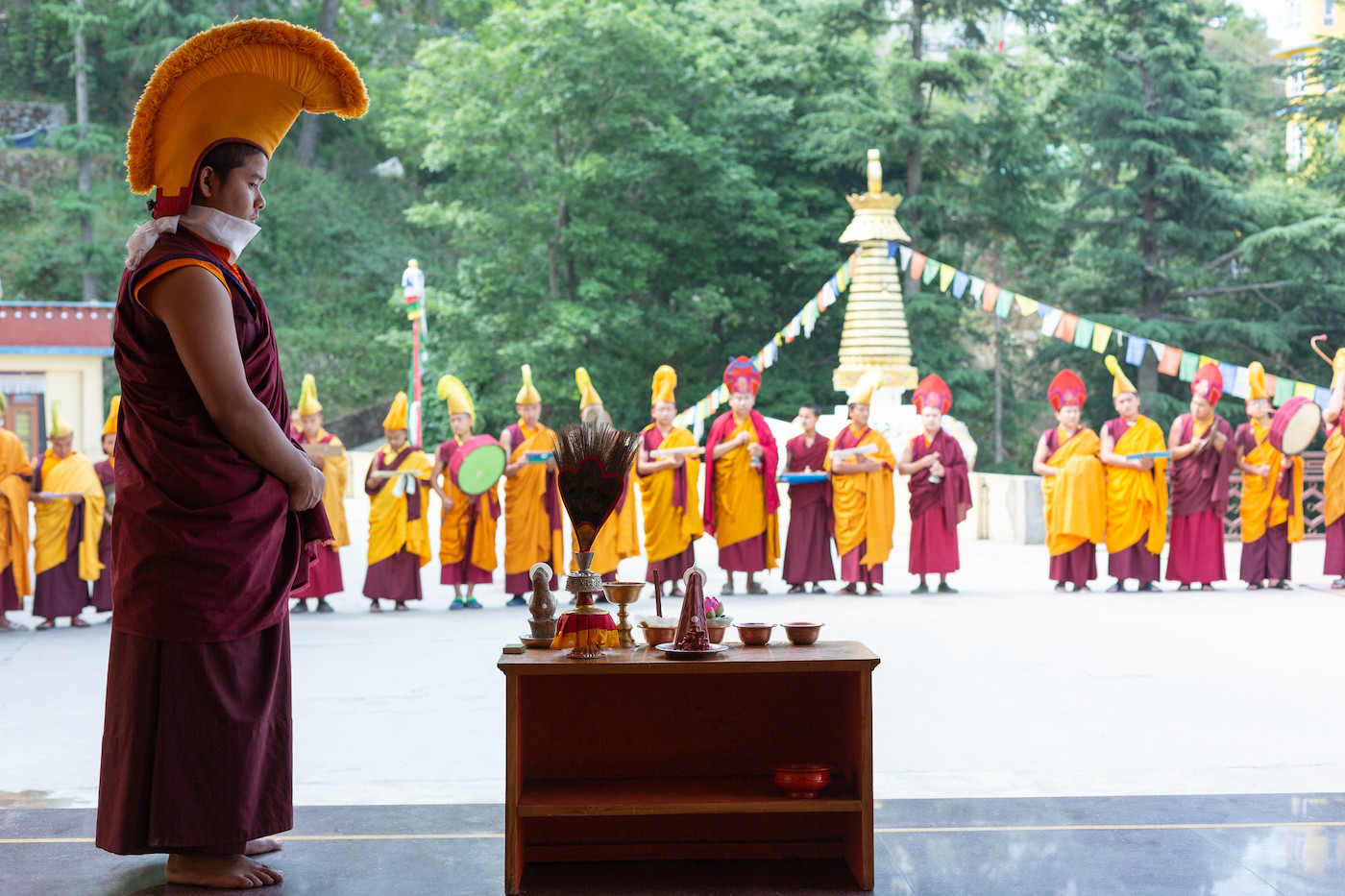
There is much to describe in so complex and long an ancient ritual. We humbly hope to offer here a description of the Obstacle Clearing ritual, part of the Accomplishment of Mani rites, from a performative perspective—performative iconography specifically. Tantra enlivens functional and dynamic iconography in multi-art synthesis. It is the core practice of Tantra.
This Obstacle Clearing ritual is a fine authentic case study. The description of actions is accompanied by 14 photographs and a 22-minute video of the preliminary Obstacle Clearing ritual, a tantric ritual embedded in the Accomplishment of Mani mantra recitation practice; a ritual within a ritual.
This Obstacle Clearing ritual is private, performed by monks initiated in tantric visualization practices. The Core of Culture team was given special permission to attend this ritual and further, to document the ritual with photographs, video, and notes.
It was the advice and suggestion of the dorje lopon to record this ritual. The monastery wanted a record of it and has agreed to share it in this format. The dorje lopon wanted to present the full context of dance in these rituals. Dance does not stand alone; it is a part of longer rituals and acts at certain points in multi-dimensional ways, to expand, transform, and empower the protective space of ritual practice.
There is a two-man, black-and-white-masked sword dance at the heart of the Obstacle Clearing ritual. Dance is used to slay a multi-headed ritual effigy, mata rutra, egoism. The effigy is also called linga. This dance resonates with danced ritual re-enactments of other stories in Buddhism where dance is used strategically and lethally. The ritual gives the dance its full meaning.
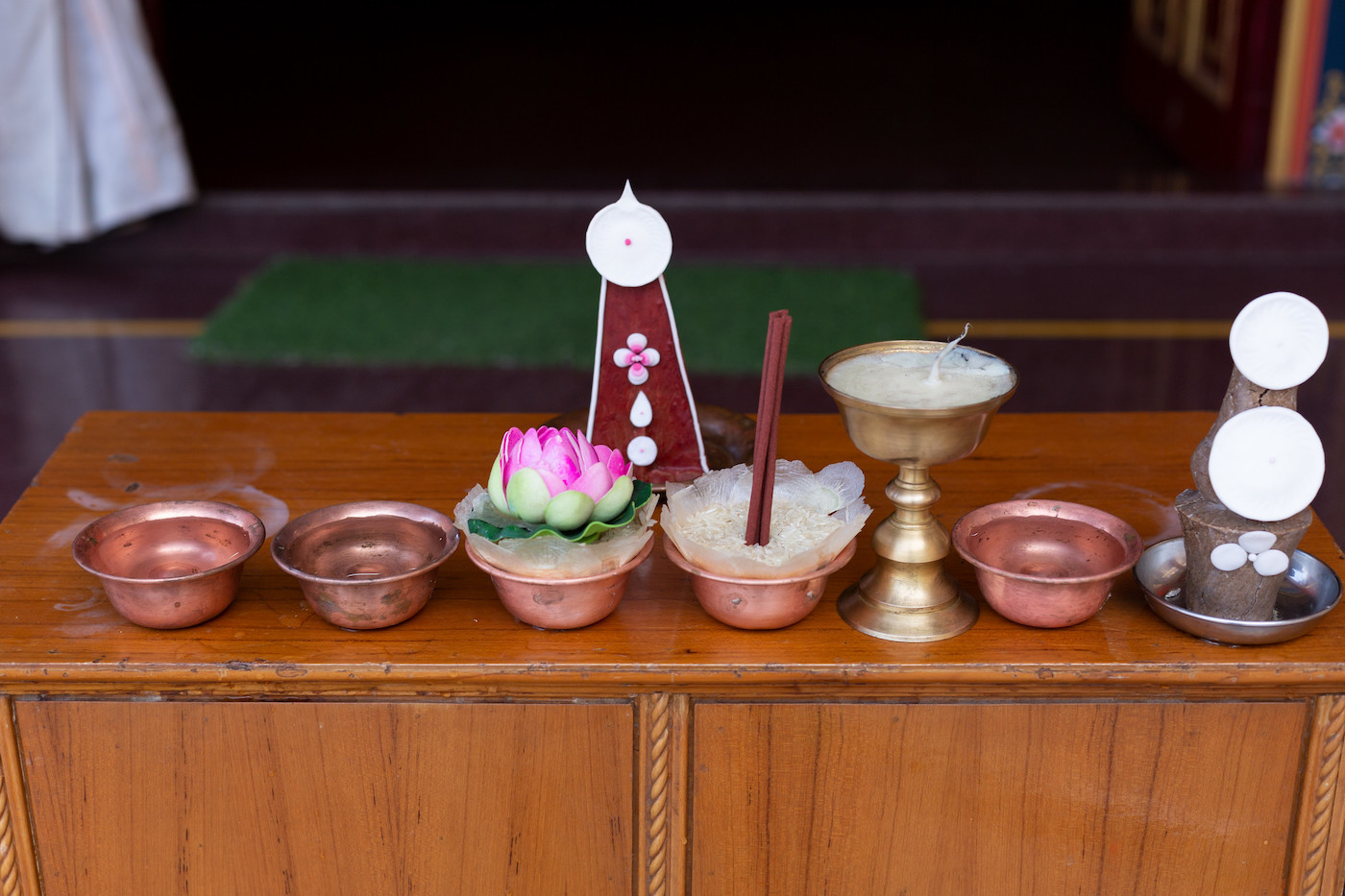
The position of vajramaster is one of the highest at a monastery, having responsibility for the fullness and propriety of the ancient ritual transmissions of the order. Only a figure possessed of high spiritual stature has the strength of mind to liberate the linga by dismemberment to a realm of higher enlightenment. The dramatic loss of the illusory world is not the message so much as the liberation of mind.
This Obstacle Clearing ritual has never before been documented. It is shared below in a 22-minute version by Jonathan Greet, accompanied by a written outline of 15 actions in the ritual.
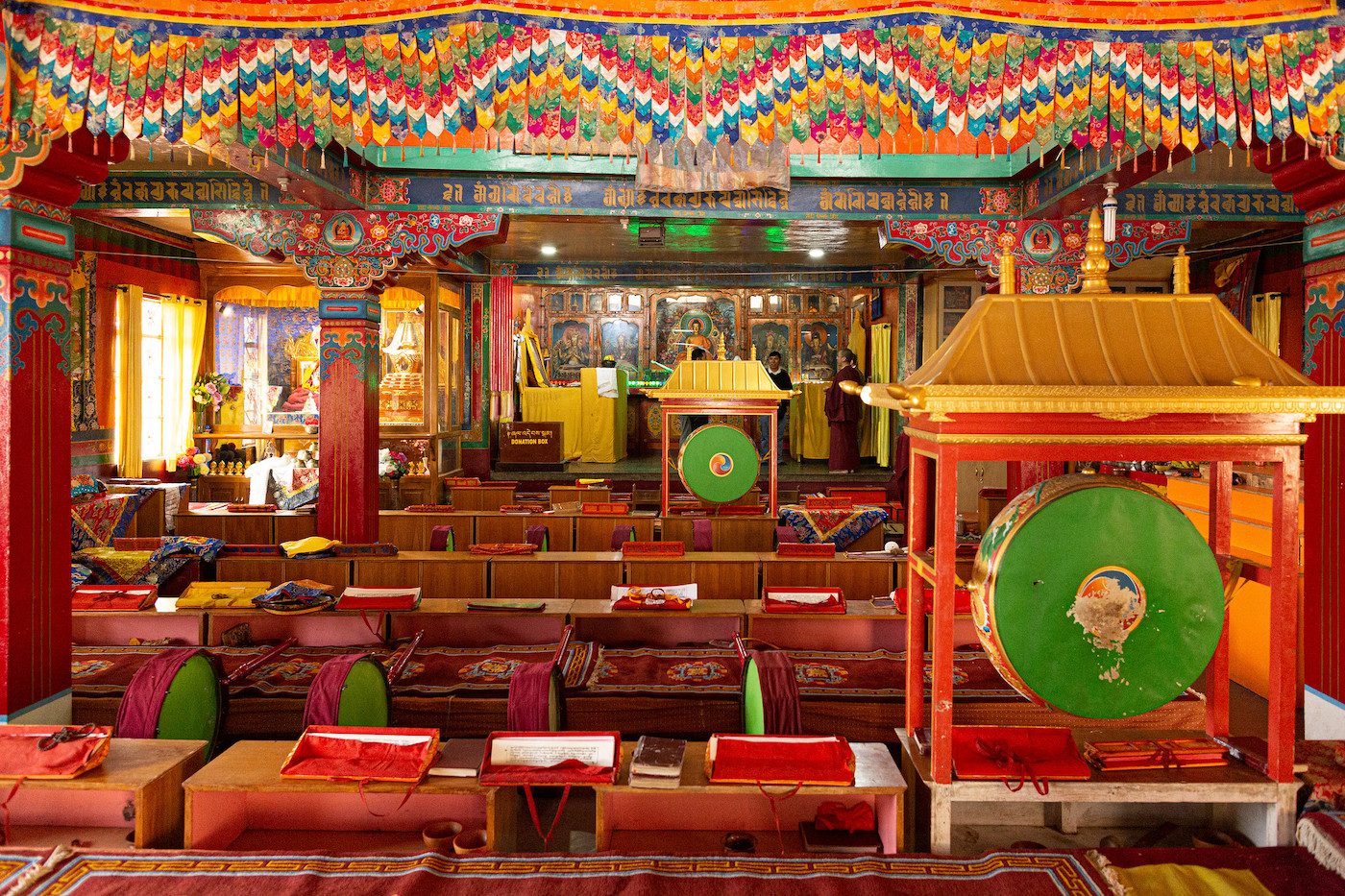
What follows, interspersing the images and text, are notes on the transmission of the Accomplishment of Mani ritual at the Nyingma school Dorje Drak Monastery by Dr. Thinles Dorje.
Apart from philosophical studies, the learning and practice of rituals are an indispensable part of Vajrayana Buddhist monastic training. Himalayan regions abound in Vajrayana monasteries and the performance of ritual is conspicuous in the daily life of Buddhist practitioners. Vajrayana monks and astrologers (Tib: skartsispa) perform rituals for numerous purposes. The Accomplishment of Mani ritual (Tib: mani.sgrub.chog) is performed by every school of Tibetan Buddhism, and in the case of the Nyingma school Dorje Drak Monastery, it is one of the most important rituals in their liturgical calendar.
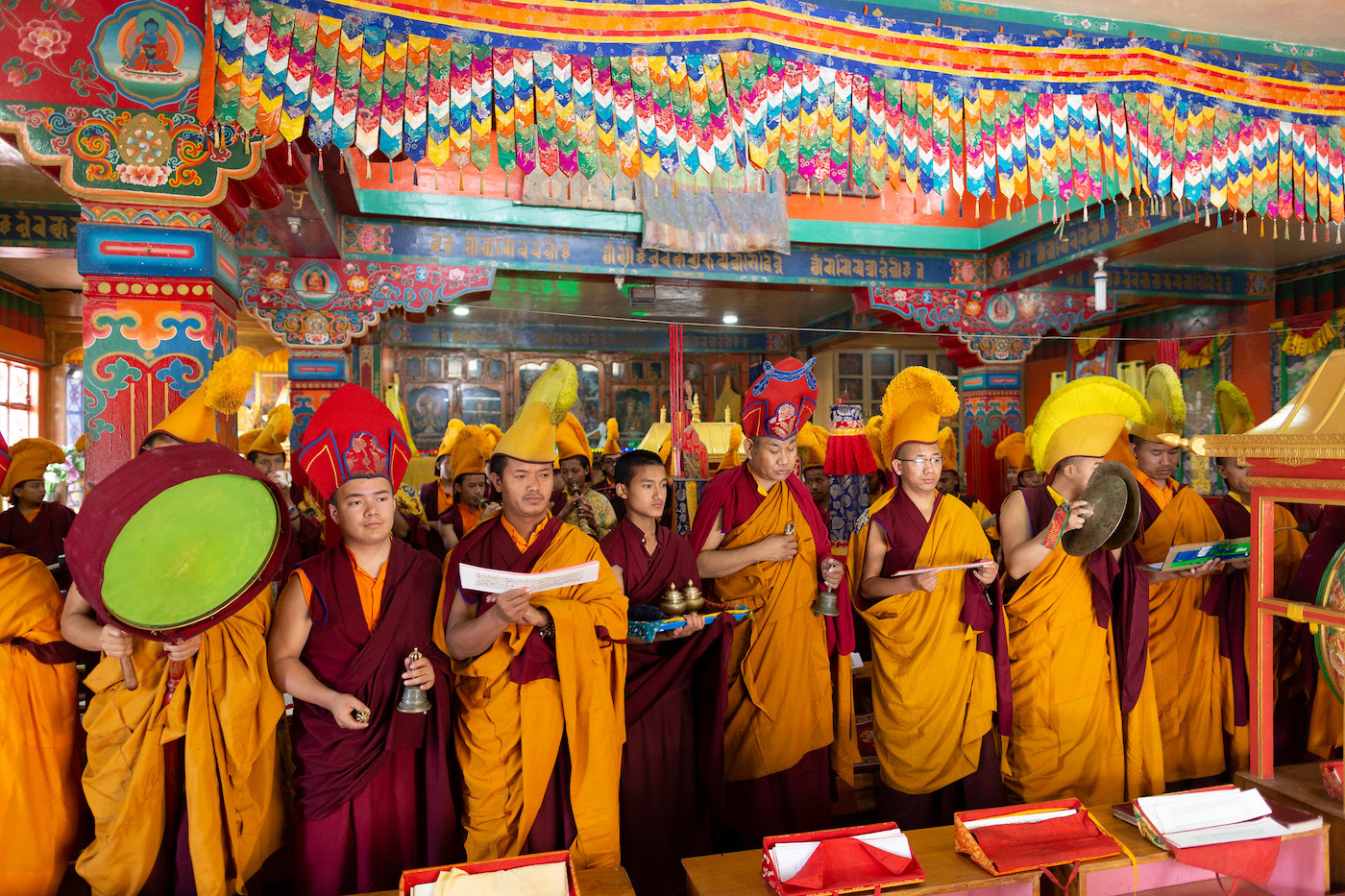
This ritual is performed in the fourth month of the Tibetan lunar calendar, called Saga Dawa in Tibetan. This month is associated with the three foremost occasions in the life of Shakyamuni Buddha: his birth, enlightenment, and Parinirvana. This month is also known as the month of multiplication of merit: any positive action accumulated during this month is multiplied 100 million times. This is one reason why Vajrayana practitioners dedicate the fourth lunar month for spiritual activity. At Dorje Drak, by conducting the Accomplishment of Mani ritual ceremony in the fourth month, the Avalokiteshvara mantra, Om Mani Padme Hum, is thereby multiplied 100 million times for each occasion it is uttered by a monk or layperson.
The Accomplishment of Mani ritual is conducted primarily for accumulating merit for the benefit of all sentient beings. The ritual unfolds in sections. First, outside and around the monastery, the monks ask the Earth Goddess for permission to spiritually purify and empower a protective space. The preliminary Obstacle Clearing takes places on the first day. Afterward, four days are devoted to completing the sand mandala and torma (ritual butter sculptures). Once readied, the 14-hour actual ritual, which includes the Obstacle Clearing ritual, is performed every day for seven days. This results in a 12-day ritual.
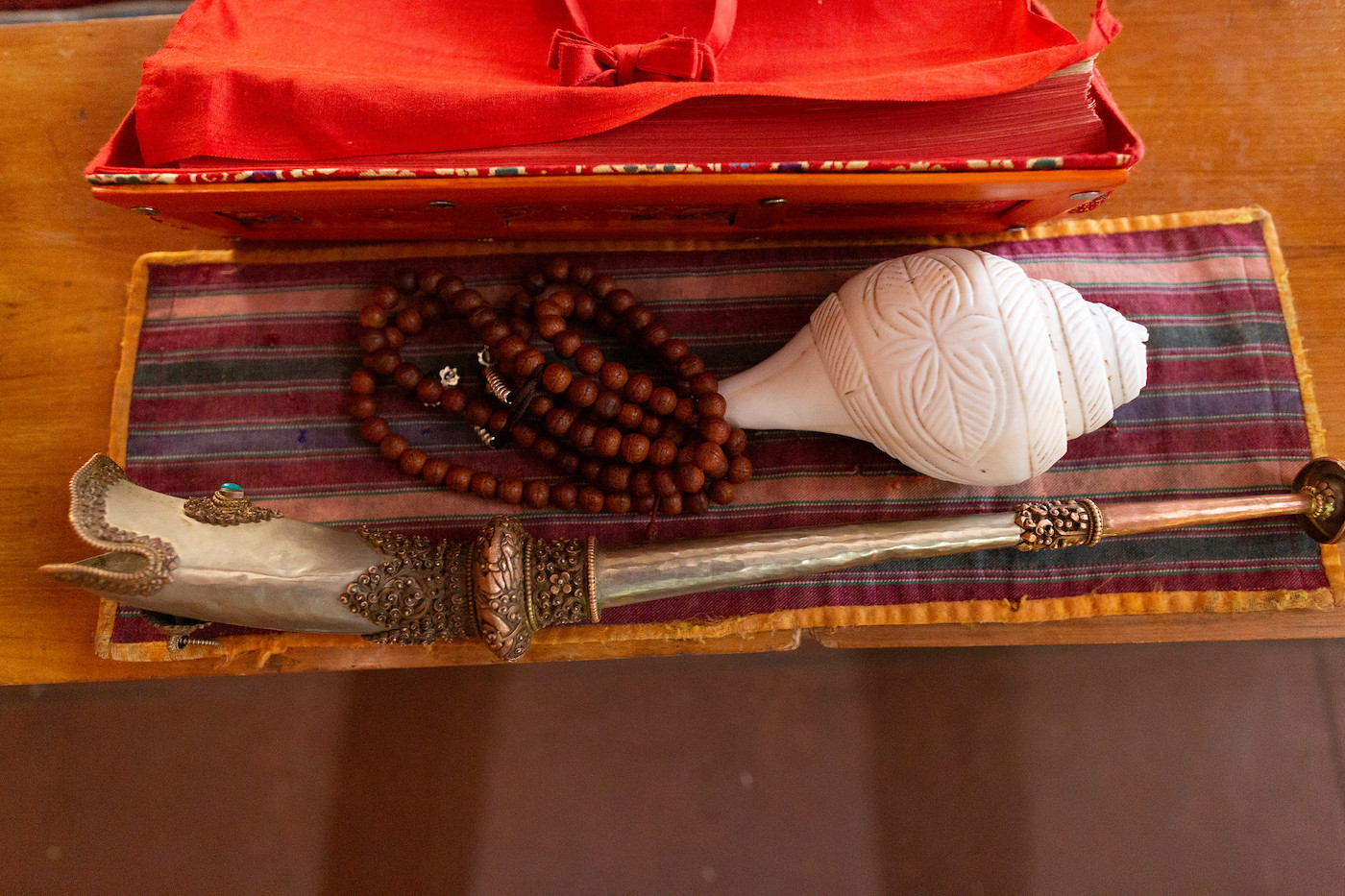
The Accomplishment of Mani ritual comprises chanting, mudra (empowered hand gestures), and recitation of the Avalokiteshvara Mantra, Om Mani Padme Hum. It includes mask dances, the creation of the mandala, the torma, and the recitation of verses. The ritual is adorned with many offerings, music, and periods of tantric meditation and visualization in which the vajramaster conducts and embodies a visualization of the central deity.
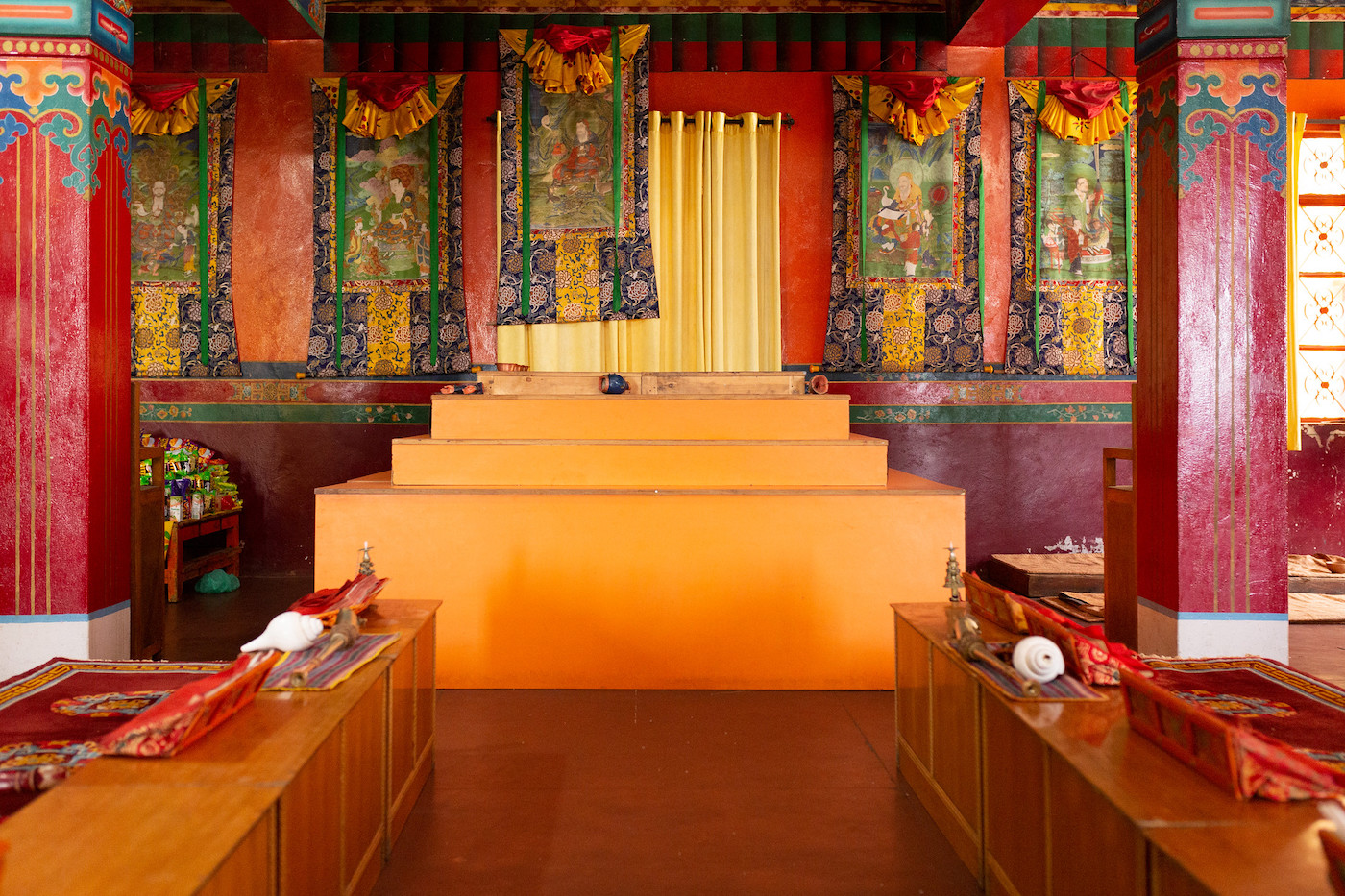
At the center of the Accomplishment of Mani ritual is the Mandala of the Wrathful and Peaceful Avalokiteshvara. An effigy of a winged, multi-armed creature with three heads, the King of Evil as a symbol representing the ego, is dismembered by dancers atop a mandala platform where a sand mandala will eventually be constructed. The vajramaster enlivens a visualization of the central deity when accepting permission from the Earth Goddess to use the land and sand to establish a protective space. Thus empowered, the vajramaster sets the mandala template and initiates its creation.
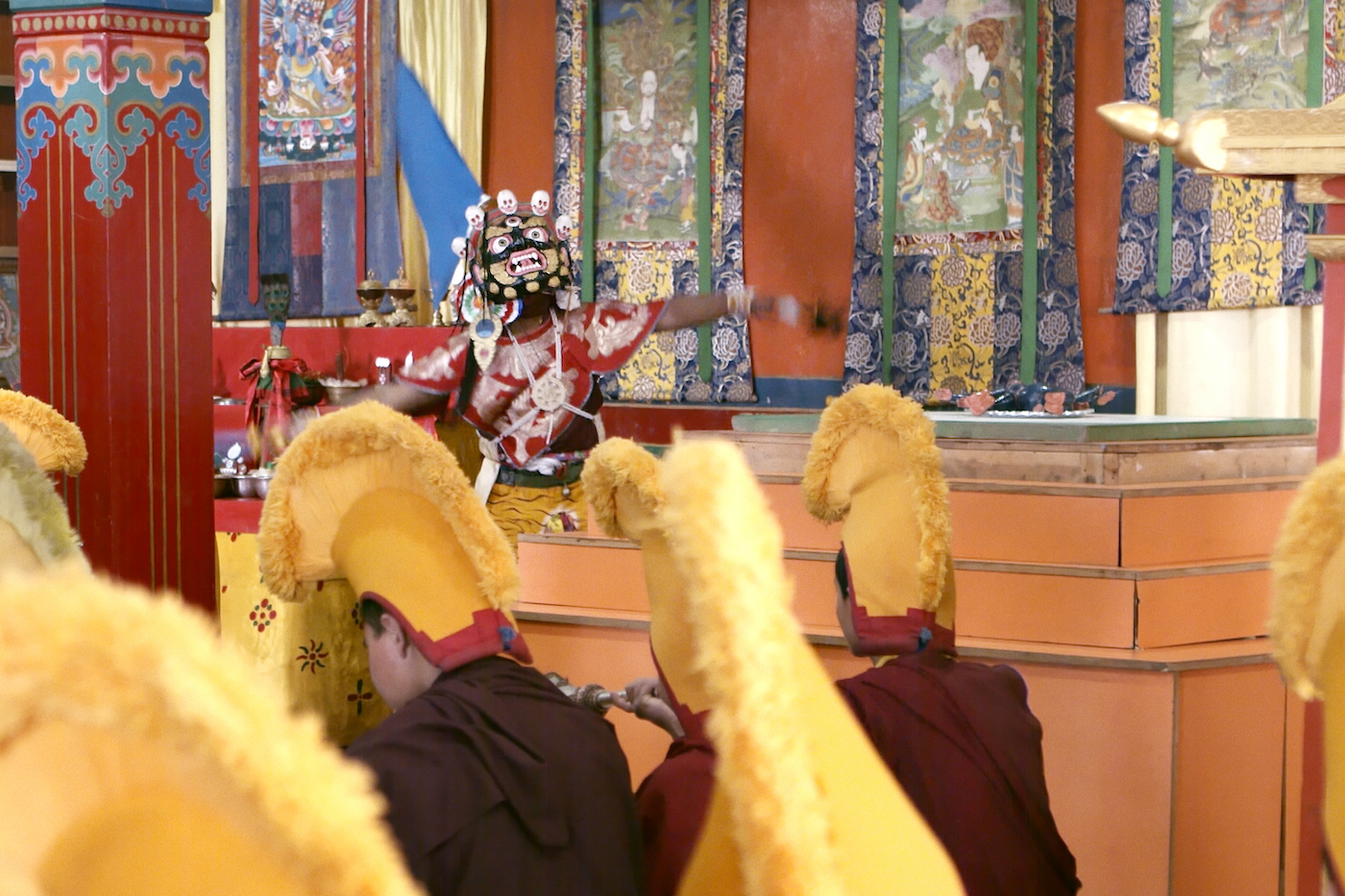
Dr. Thinles Dorje continues:
The mandala is a representative graphic depiction of the tantric deity’s realm of existence used in a tantric ritual ceremony, as well as visualized by practitioners. The Accomplishment of Mani ritual centers on the mandala of the Wrathful and Peaceful Avalokiteshvara. After the preliminary Obstacle Clearing ritual, four young monks prepare the construction of this Mandala with four different sand colors. Each monk is responsible for constructing one of the four directions.
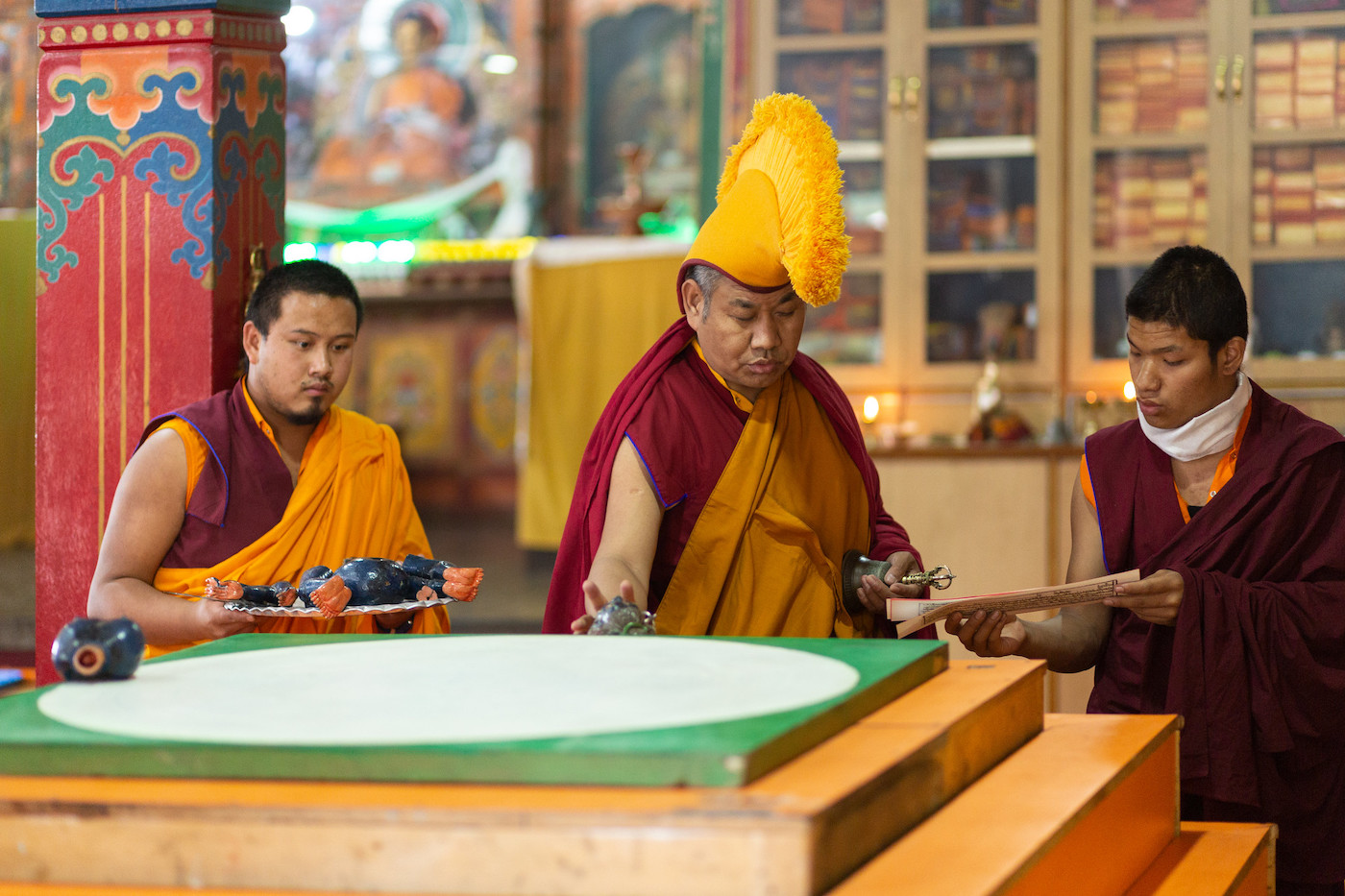
In addition to the preparation of the mandala over four days, the torma are created. The word torma combines the terms tor, “to scatter,” and ma, “to pervade with unconditional compassion.” The conceptual meaning implies the attitude of offering ingredients without attachment. Torma are a type of food offering in various shapes, sizes, and colors. Torma represent different deities, Dharma protectors, and evil spirits. They are used in tantric ritual ceremony for different purposes.
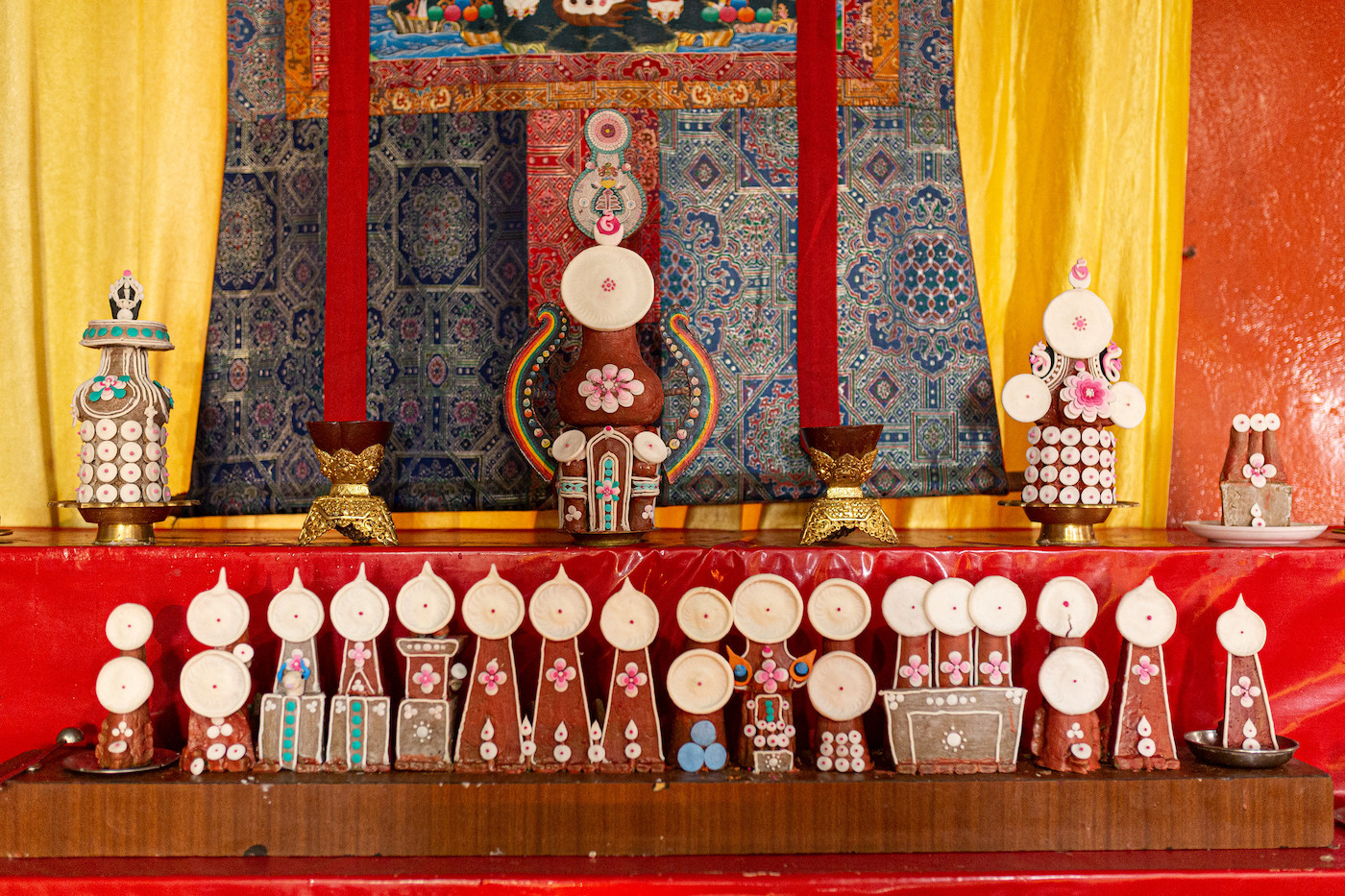
There is no written manual or instruction at Dorje Drak Monastery for making ritual torma and the corresponding ritual ceremony. Every aspect is learned through seeing, participating, and practicing. Knowledge is passed down from the elders during the ritual ceremony. This “whispered” tradition is also known as the lineage of “seeing and practicing.”
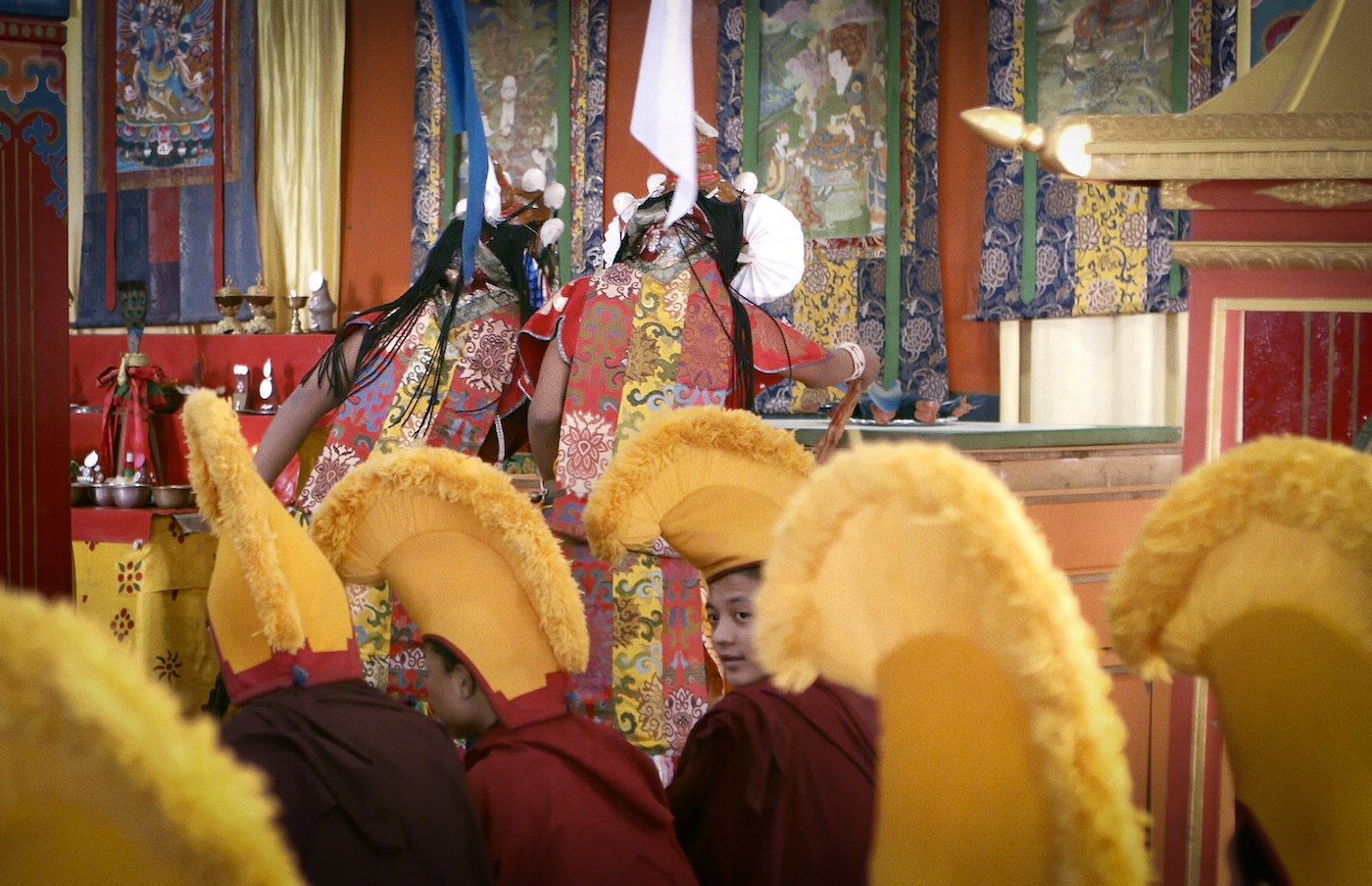
The Obstacle Clearing ritual centers on the mandala of the Wrathful and Peaceful Avalokiteshvara. The wrathful Avalokiteshvara is known as Hayagriva (Tib: rtam.grin). Two dancers, sword-bearing ging from the otherworldly dimension of Zangdopalri, appear in white and black ging masks. Their dance, Dralging (Tib: sgral.ging dkar.nag) takes place hovering around the mandala platform, brandishing their swords in a tantric pattern designed to subjugate the obstacle hostile to a pure Mind. The dance climaxes with the dismembering of the ritual effigy; the figure of a creature, cut up into body parts on top of the mandala platform. The two ging perform an exit dance as they return to rarified realms.
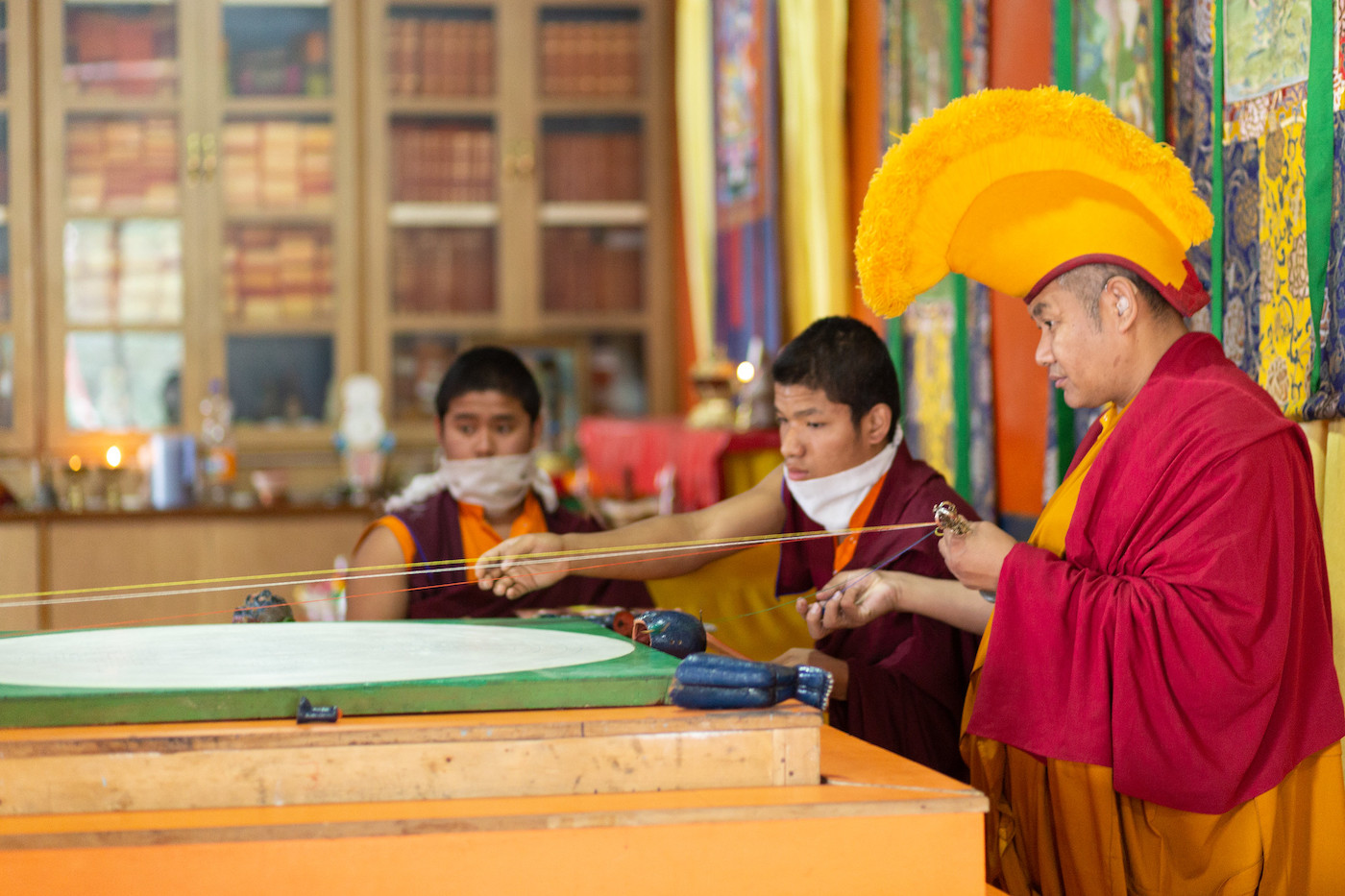
Dr. Thinles Dorje concludes:
Soon after the dance, with the effigy now dismembered, the vajramaster, in a state of deity visualization, comes forward to the mandala platform to receive permission from the Earth Goddess for the creation of the sand mandala, The body parts are placed at geometric points around the edge of the mandala.
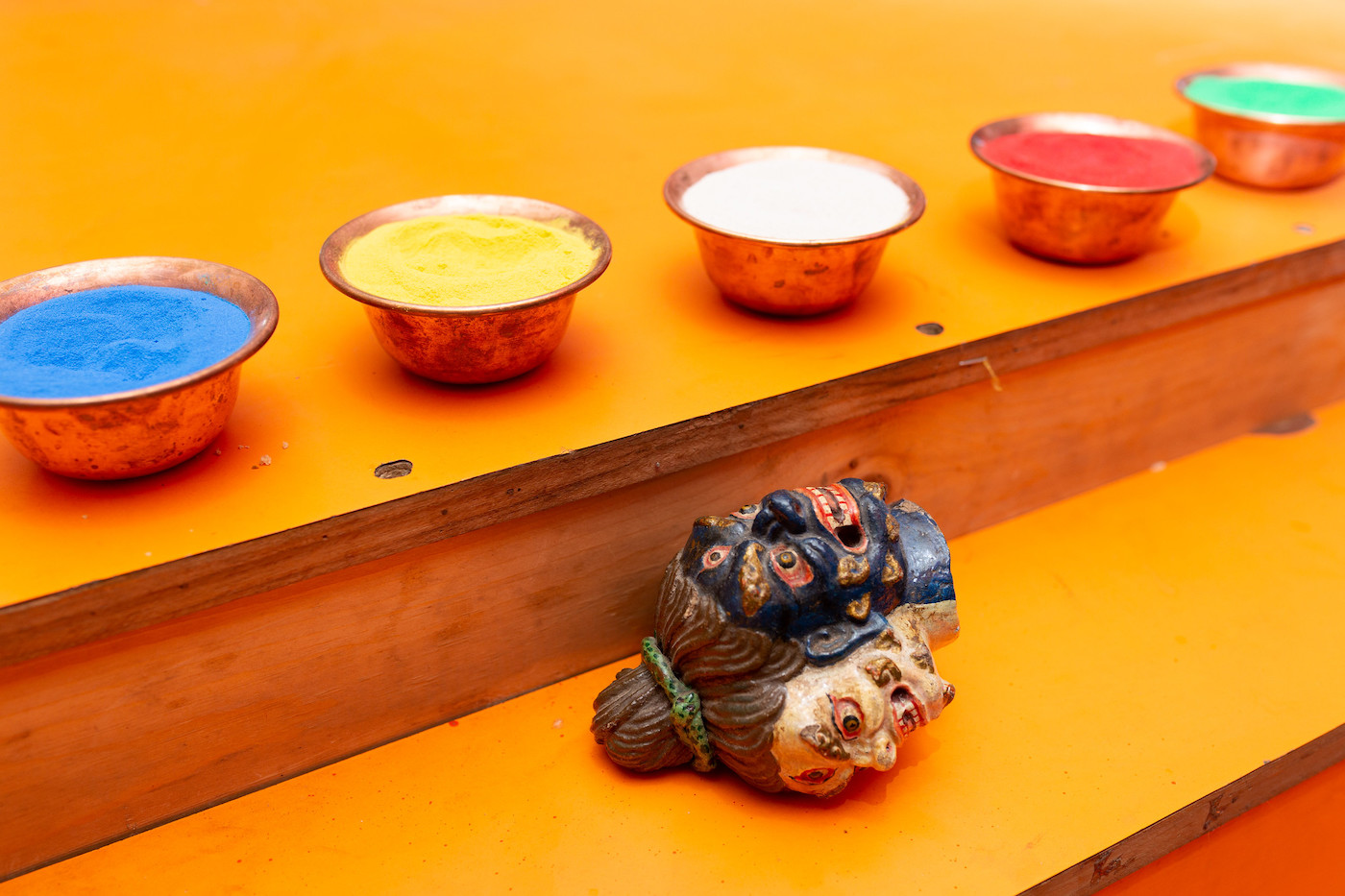
The Accomplishment of Mani ritual ceremony has three parts: preliminary, actual, and concluding. For seven days, 14 hours of ritual practice each day are devoted to the Accomplishment of Mani rituals. Preliminary rituals consist of offering torma and making requests to the deities for protection. Concluding rituals involve the destruction of the mandala.
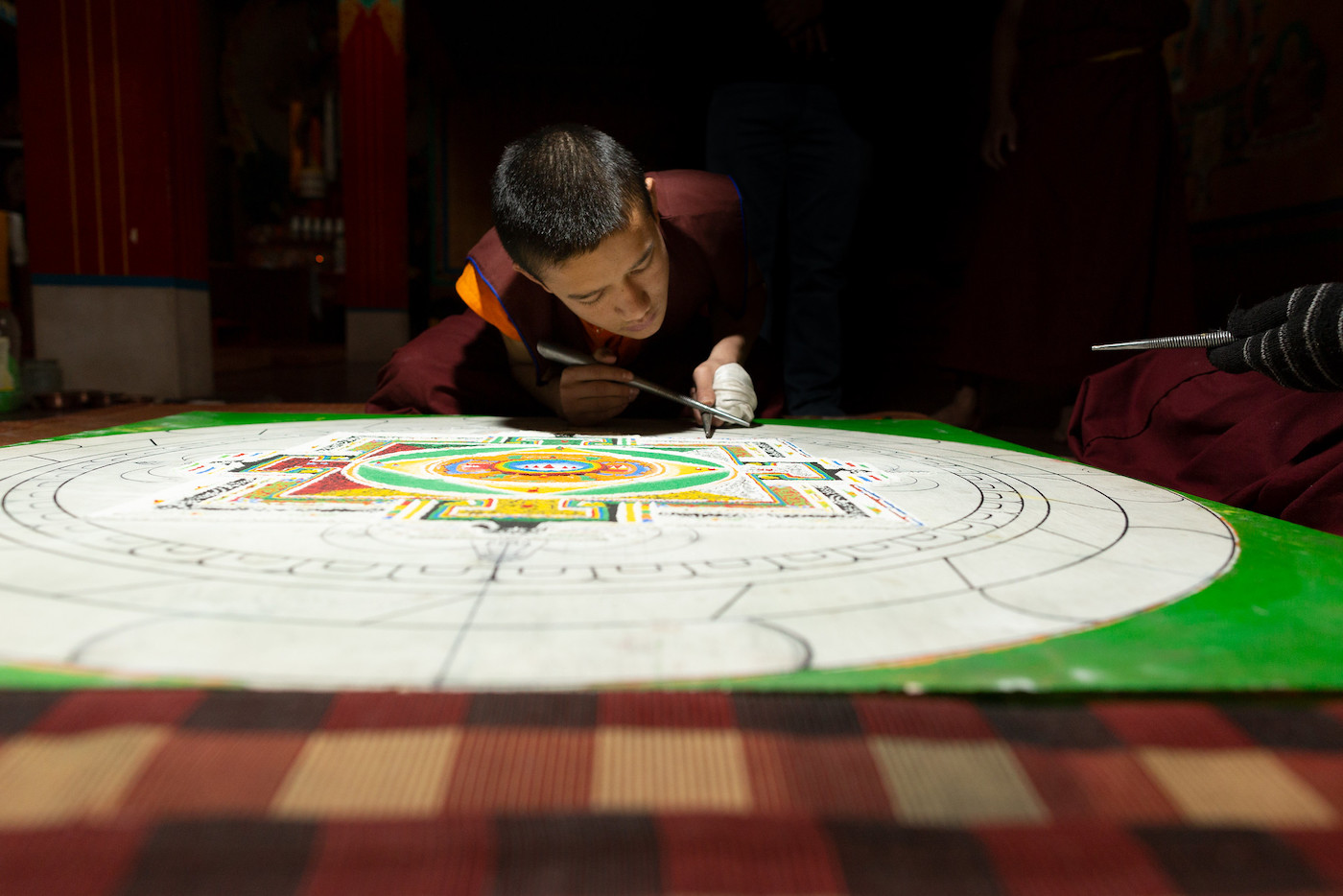
The actual ritual includes the purification of the ritual space (Tib: bsangs), and the invocation of transcendental and local deities (Tib: spyang.drangs). It includes the offering of place (Tib: bzugs.pa), the offering of seven substances(Tib: mchod.pa), of praise (Tib: bstod.pa), of supplication (Tib: phrin.las bcol.ba), and the recitation of mantra in the course of meditation (Tib: bzlas.pa). The Obstacle Clearing ritual is repeated every day.
Sequence:
1. Asking the Earth Goddess for permission to use the land to make a protective space.
2. Procession into the Puja Hall with instruments: jali (oboe), drums, bells, and cymbals.
3. Chanted puja accompanied by music of cymbals and thigh-bone trumpet.
4. The vajramaster traces the “tantric template of dismemberment” over the effigy. A vajra and a three-sided/bladed dagger, phurba, is used.
5. The effigy is placed on a square altar that is also the platform upon which a sand mandala will be created.
6. Black and white Dralging, a dance for two dancers, black and white ging. It begins with music by human thighbone trumpets.
7. Dance with chants, drums, cymbals, and bells on the dancers’ feet. Dance is a generator and conduit of ritual energy moving into another dimension. Dance defines and holds the ritual gestalt.
8. Dancers dismember the ritual effigy with their short curved swords, using tantric sword strokes, carrying out the actions of the vajramaster.
9. Exit dance: supernatural beings return to rarified realms in a pattern of repeating retreat. The dance concludes with conch shell horns.
10. The vajramaster, in state of visualization, approaches the mandala platform. Bowls of colored sand are brought, accompanied by chanting and bells.
11. The vajramaster instructs acolytes to place dismembered body parts at geometric points along the edge of the mandala.
12. The vajramaster measures the template for the design and diagram of the mandala.
13. The vajramaster inscribes each cup of colored sand with a tantric syllable written with his vajra in the sand: Om, Hum, Tram, Hrih, Ah.
14. A string is stretched across the center of the mandala between the lama and an acolyte, establishing lines and measurements of the mandala drawing. This string is then gathered, wrapped around the vajramaster’s vajra.
15. The vajramaster begins placing each of four colored sands onto the mandala itself, initiating its actualization. Finally, a bowl is placed upside-down over a small mound of sand placed at the mandala’s center. The vajra with the string spooled around it, is placed atop the bowl.
This is the end of the Obstacle Clearing ritual.
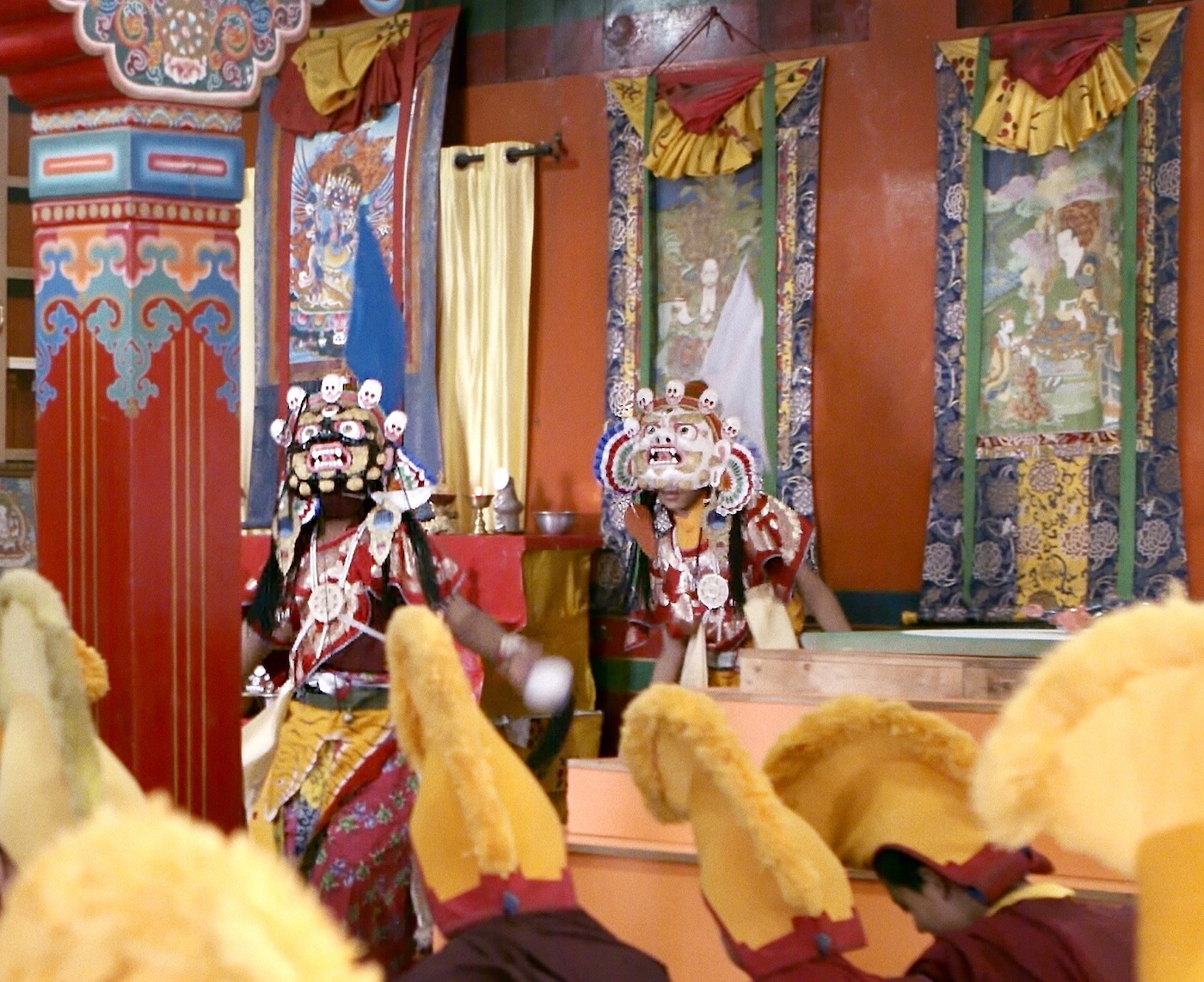
With thanks to Dorje Lopon Shedup Jigmed, and the monks of Dorje Drak.
Thanks to Jonathan Greet and Dr. Thinles Dorje.
Special thanks to Barbara Kipper.
Core of Culture aspires to share authoritative presentations of Buddhist dances and rituals. In this complex study, we apologize for whatever errors there might be, they are surely our own. Core of Culture was given permission by the monastery to publish this writing, and these photos and video of their ritual, with their blessing.
See more







